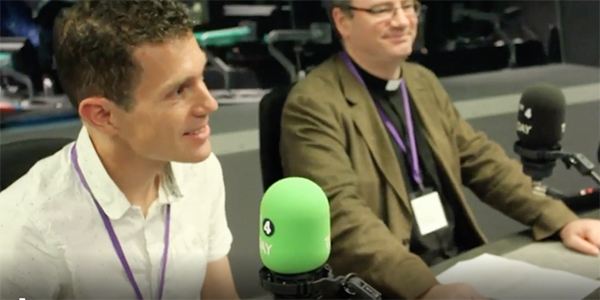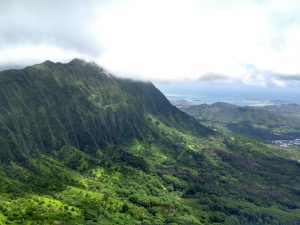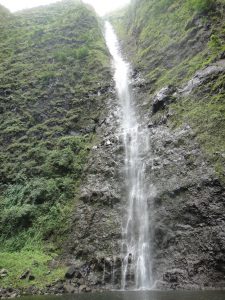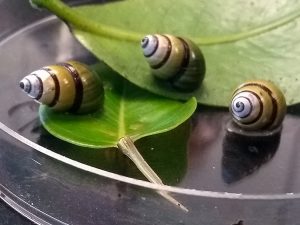
July 9, 2018, by Emma Thorne
From Hawaiian snail trail to Broadcasting House
When the plight of Jeremy the lonely ‘lefty’ snail made international headlines for the first time in October, it was up to his scientist Dr Angus Davison, an evolutionary geneticist in the University’s School of Life Sciences, to use the media to explain why the plight of this one-in-a-million gastropod could help us to understand our own body’s development. Now Dr Davison reveals his excitement – and nerves – ahead of putting his burgeoning science communications skills through their paces as one of the British Science Association’s newest Media Fellows…
Being a professional scientist and academic in a university is a strange thing. Although there are many – and increasing – demands on our time, I still consider it the job that I would want to do forever, if I could. I get paid to think about stuff that interests me, and if I can persuade others to fund the work, we get to do some really amazing things. Like working in Hawaii (from where I am writing this), studying snails that only live in high mountain waterfalls that are reached by helicopter, hiking (sometimes running) and abseiling.
But of course, being a scientist is an incredible privilege. In what other profession can you take so much time over a single question? In my case, I have spent much of the past 14 years trying to understand why some species of snail have shells that coil both ways, when nearly all other animals do not vary in their body asymmetry. This might seem like a niche thing, but actually the answer may tell us something about how our own bodies develop. And, in a surprising turn of events, when I put this same question to a BBC Radio 4 Today audience in 2016 – via a lonely snail called ‘Jeremy’ – the subsequent media attention reached an estimated audience of about 1.9 billion people.
This recent experience in communicating science has directly led to a career shift. From next week, and for the rest of the summer, I will be a full time intern at the BBC Science Radio unit in London, sponsored by the British Science Association and the University of Nottingham. My understanding is that I will be involved in a wide variety of different activities, from researching stories, to writing, to screening potential interviewees. I am excited and not at all nervous. Really.
As a scientist, a single manuscript can take weeks to write, as I labour over the meaning of every single word. In talking to the media about ‘Jeremy the snail’, I was amazed at how rapidly an idea becomes a web page and printed copy. The Daily Telegraph managed to produce a factually correct article about an hour after a Radio 4 interview*. Some science journalists will pitch 2-4 ideas per day, and if they are lucky, they then have to write and publish them within hours.
So, what am I most anxious about prior to my stint in the BBC? Practically, I wonder whether I have the ability to learn to write at speed? How will it be to shift my focus to the research of other scientists, rather than myself, for the first time in years?
Why would I do this? A change from the usual. Fun. But I also think that it will be an amazing opportunity to see a life in science as an outsider. And in the future, I hope that I may use this knowledge to better communicate science.
Finally, in case it is not obvious already, this is not an entirely selfless exercise. I am hoping that I will come out of the internship with a better understanding of how to engage the media, be better practised at explaining complex ideas in a way that people can understand, and that this may translate to writing better grants and proposals with more immediate impact.
Whatever the outcome, I am looking forward to the opportunity.
* Except for the line: Earlier, when biologists were trying to encourage him to mate, Dr Angus Davison, a scientist at the University of Nottingham, revealed that … “he was just not interested.”
No comments yet, fill out a comment to be the first




Leave a Reply